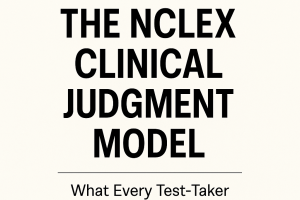PHARMACOLOGICAL AND PARENTERAL THERAPIES(IV THERAPIES)

Intravenous (IV) therapies are a vital aspect of pharmacological and parenteral treatments in healthcare settings. These therapies involve administering medications or fluids directly into a vein, allowing for rapid and efficient absorption into the bloodstream. As nurses, understanding IV therapies is crucial for delivering effective, timely, and safe care to patients. This blog post covers the principles of pharmacological and parenteral therapies, focusing on IV therapies, their uses, and considerations for proper administration.
1. What is Intravenous (IV) Therapy?
Intravenous (IV) therapy involves the administration of fluids, electrolytes, medications, or nutrients directly into the venous system through a vein. IV therapy is often used when a patient cannot take medications orally or when immediate drug effects are required, such as in emergencies or acute conditions.
2. Types of IV Therapy
There are various types of IV therapy used in different clinical settings. Some of the most common types include:
– Continuous IV infusions: Administer fluids or medications over a prolonged period, such as when providing hydration, antibiotics, or pain relief.
– Intermittent IV infusions: Administer medications in short bursts, typically several times a day, such as IV antibiotics.
– IV bolus: A single, large dose of medication given quickly through the IV line, often used in emergencies.
– Total parenteral nutrition (TPN): Provides essential nutrients intravenously when patients cannot eat or absorb nutrients through the gastrointestinal tract.
3. Indications for IV Therapy
IV therapy is essential in various medical conditions, including:
– Hydration: For patients who are dehydrated or unable to drink fluids.
– Electrolyte imbalance: To correct imbalances such as low sodium, potassium, or calcium.
– Medications: Antibiotics, pain relief, and chemotherapy are examples of medications often administered via IV.
– Blood transfusions: Blood or blood products are administered through IV to manage blood loss or specific conditions like anemia.
– Parenteral nutrition: For patients unable to take nutrition orally due to gastrointestinal issues.
4. Safety Considerations for IV Therapy
Administering IV therapy requires careful attention to safety protocols to prevent complications such as infections, infiltration, or phlebitis. Key safety measures include:
– Maintaining a sterile environment: This reduces the risk of infection when inserting an IV catheter or administering fluids or medications.
– Monitoring for complications: Nurses must watch for signs of complications like swelling, redness, pain at the site, or systemic symptoms like fever.
– Calculating doses accurately: IV medications must be carefully calculated based on patient-specific factors like age, weight, and kidney function.
– Regular site inspection: The IV insertion site must be regularly checked for signs of inflammation, leakage, or infection.
5. Common Complications in IV Therapy
Complications may arise during IV therapy, making it essential for nurses to remain vigilant. Some potential complications include:
– Infiltration: This occurs when IV fluids leak into the surrounding tissue, causing swelling and discomfort. Immediate intervention is required to avoid tissue damage.
– Phlebitis: Inflammation of the vein due to the catheter or medication can cause pain, redness, and swelling.
– Infection: Improper IV site care can lead to infection, which could progress to serious systemic issues like sepsis.
– Air embolism: This is a rare but severe complication caused by air entering the venous system, leading to potential cardiovascular collapse.
Practice Questions
1. What is the main reason for using total parenteral nutrition (TPN) in IV therapy?
a) Hydration in dehydrated patients
b) To provide nutrients when the patient is unable to eat or absorb food through the digestive system
c) To administer antibiotics for infections
d) For blood transfusions
Answer: b) To provide nutrients when the patient is unable to eat or absorb food through the digestive system
2. Which of the following is an important safety consideration when administering IV therapy?
a) Monitoring the patient’s respiratory rate
b) Ensuring the IV site is sterile before insertion
c) Providing oral medication alongside IV fluids
d) Administering medications quickly without dose calculation
Answer: b) Ensuring the IV site is sterile before insertion
3. Which of these complications can occur during IV therapy?
a) Fatigue
b) Infiltration
c) Diarrhea
d) Rash
Answer: b) Infiltration
Conclusion
Intravenous (IV) therapy is a critical component of modern healthcare, enabling the effective administration of fluids, medications, and nutrients directly into the bloodstream. Proper knowledge and application of IV therapy help ensure patient safety and optimize treatment outcomes. As nurses, it’s essential to understand the different types of IV therapies, their indications, and the potential complications. This understanding enables you to provide timely, accurate care while minimizing risks. Continuous education and awareness of best practices are key to delivering high-quality IV therapy to patients in various clinical settings.






